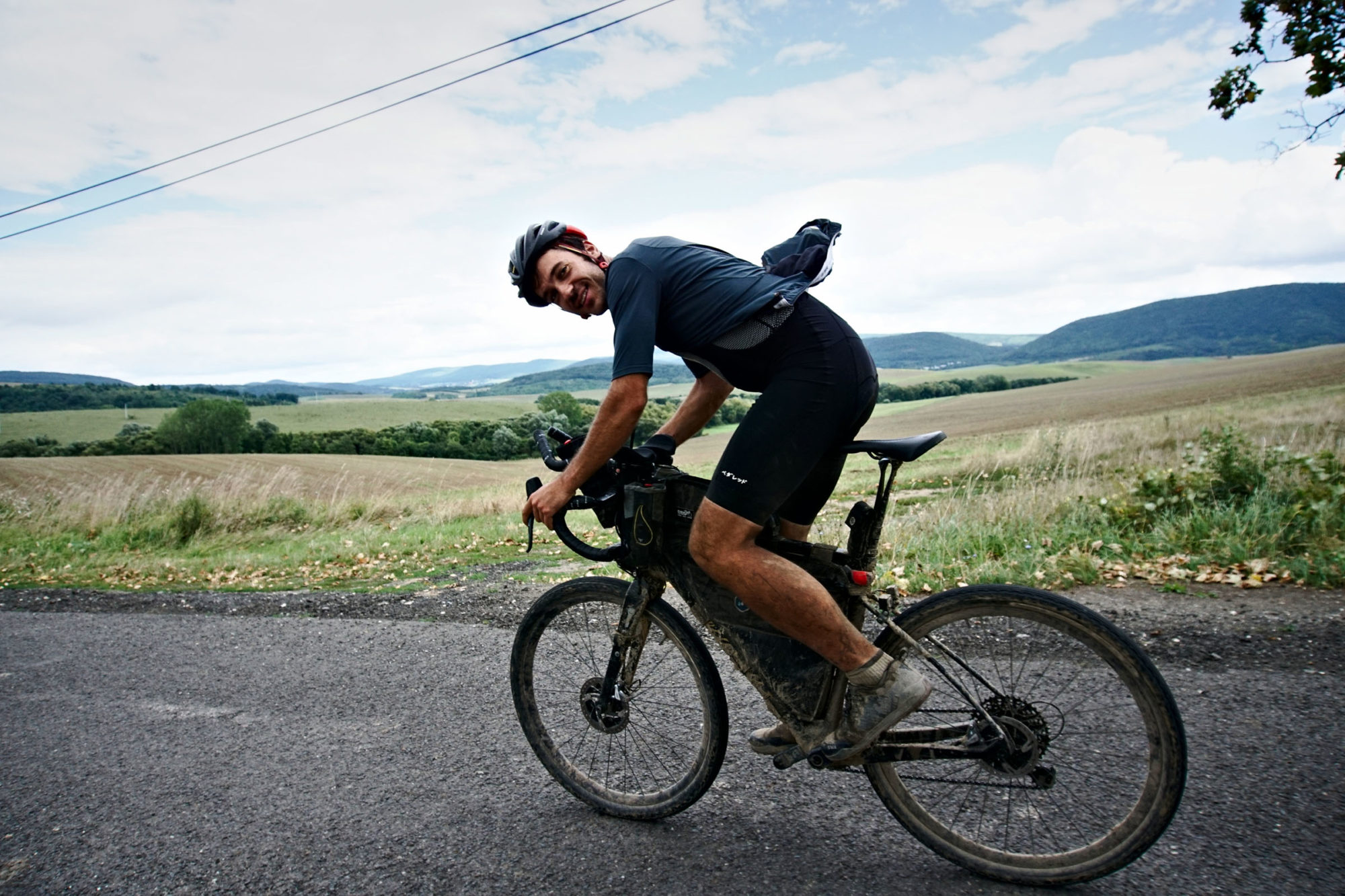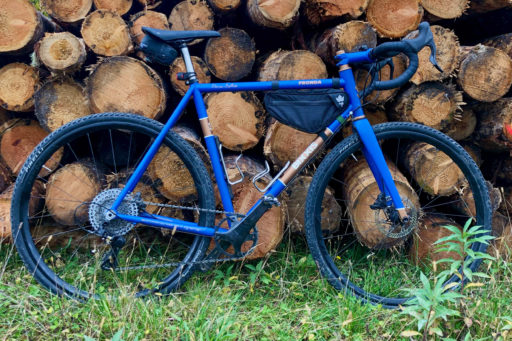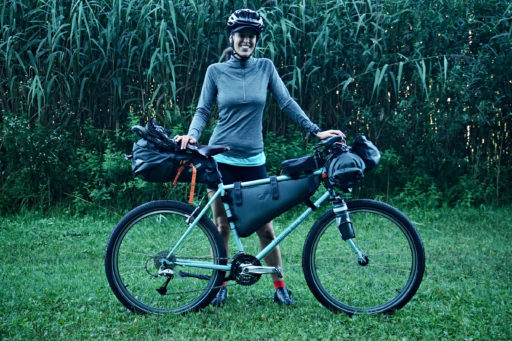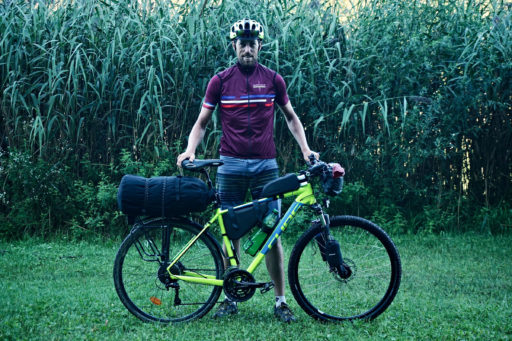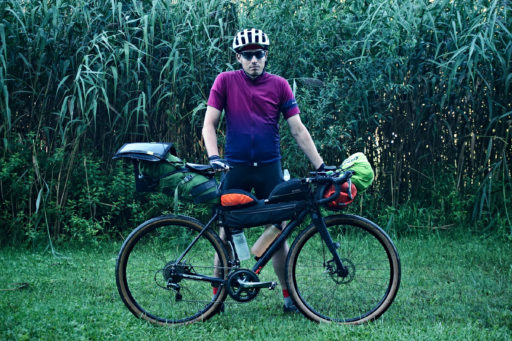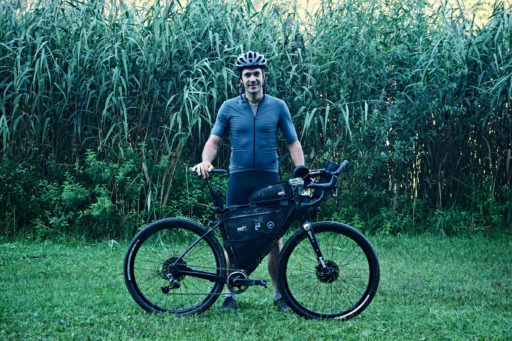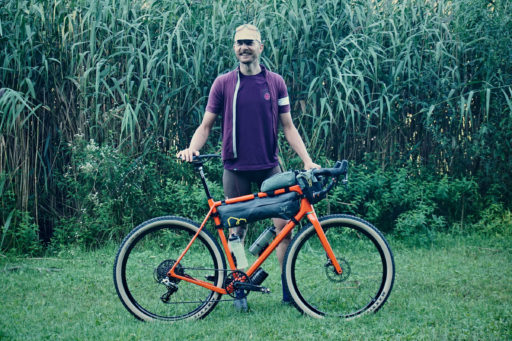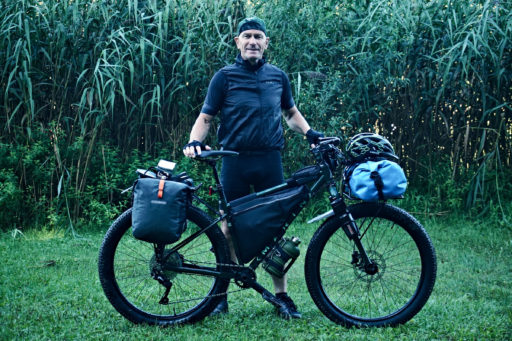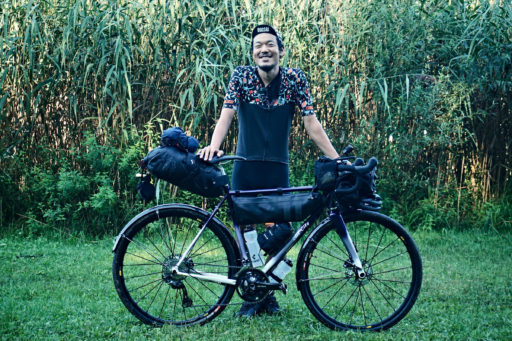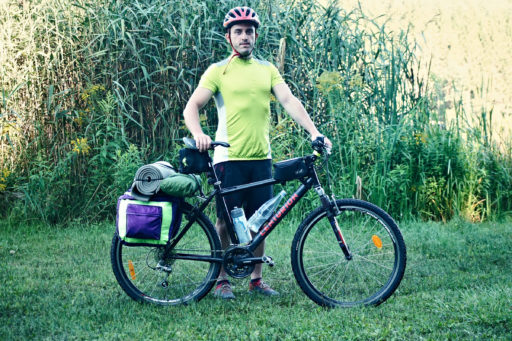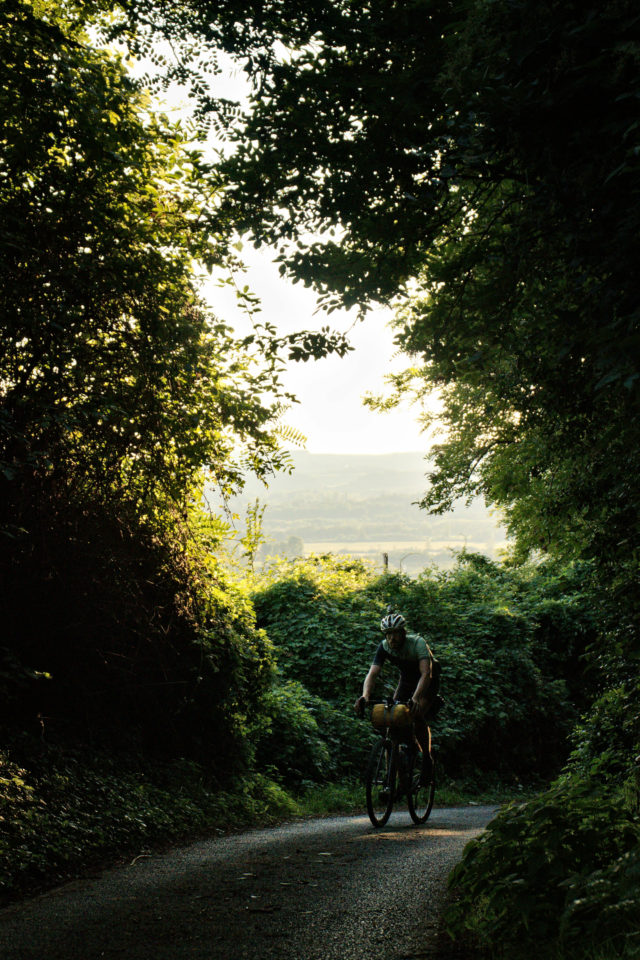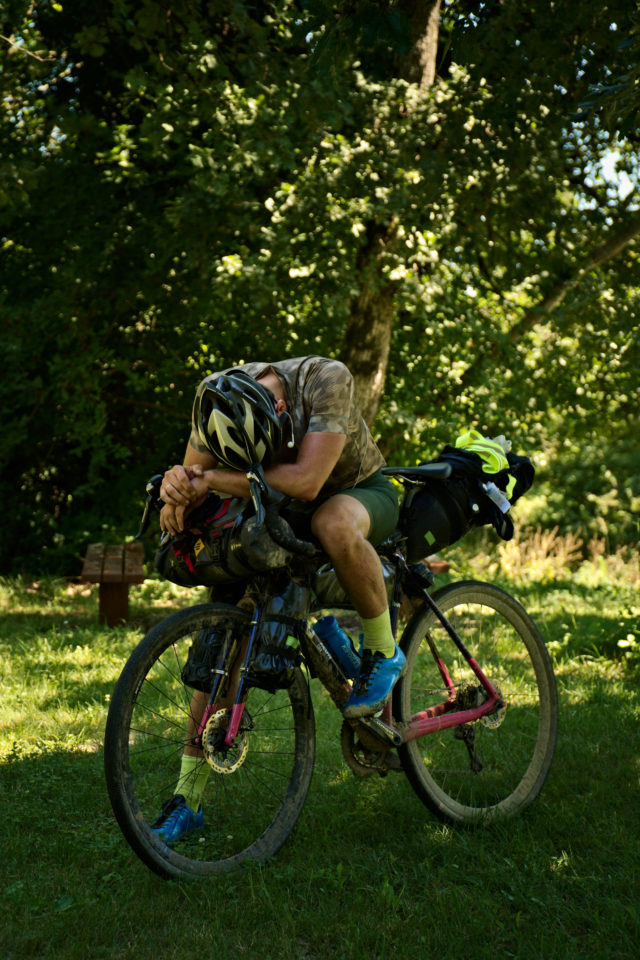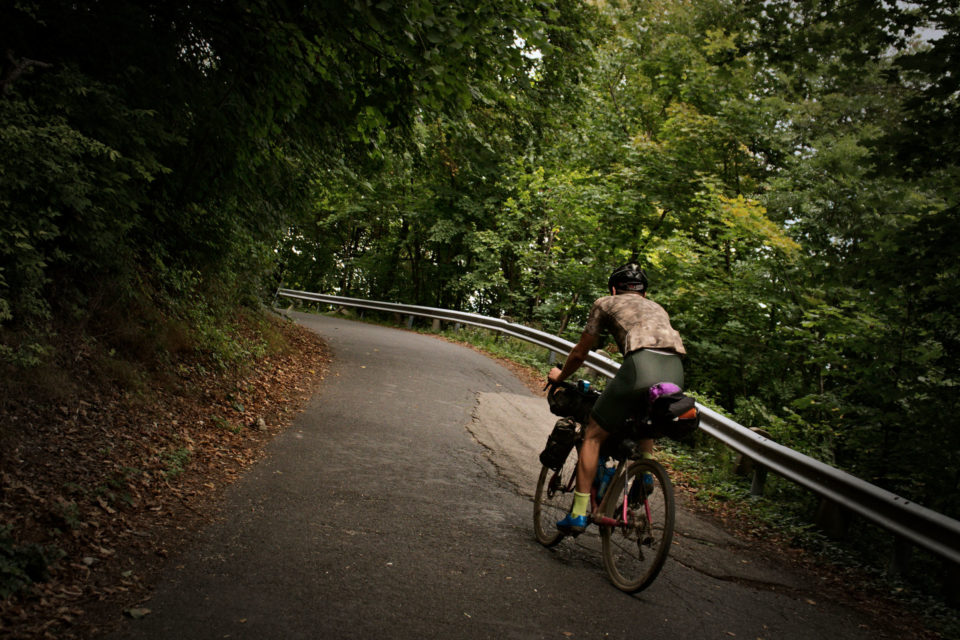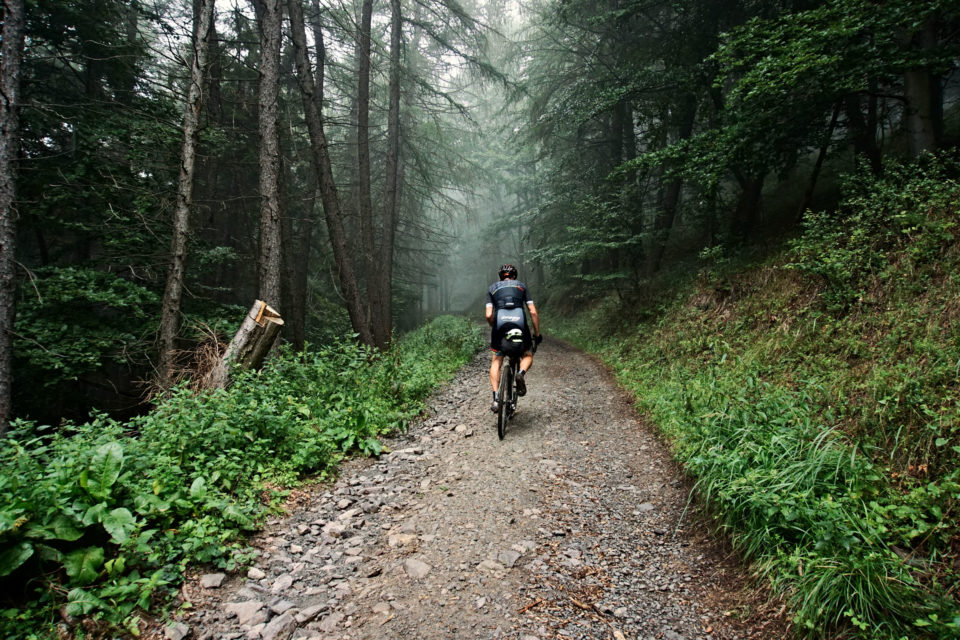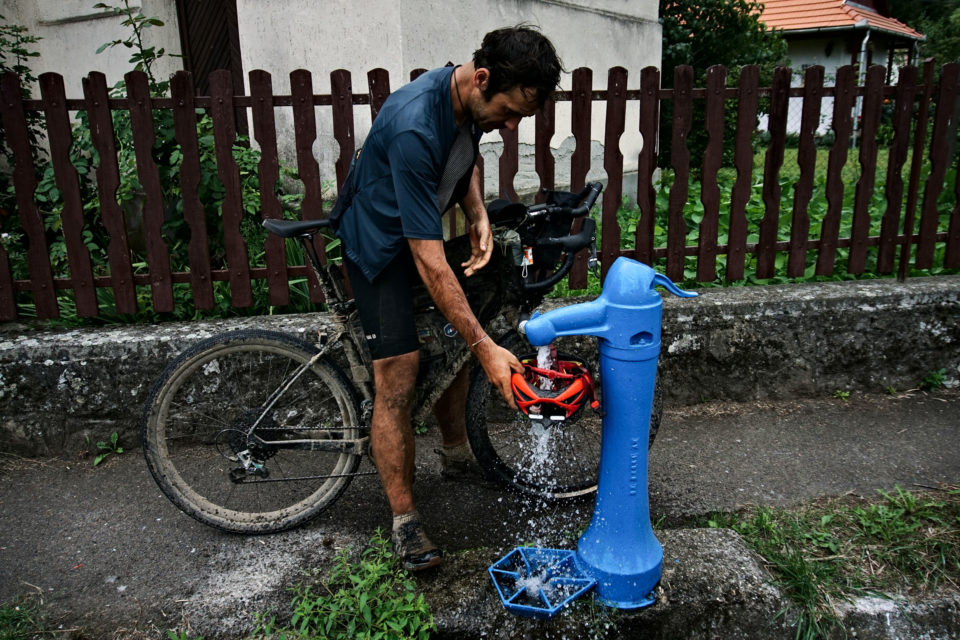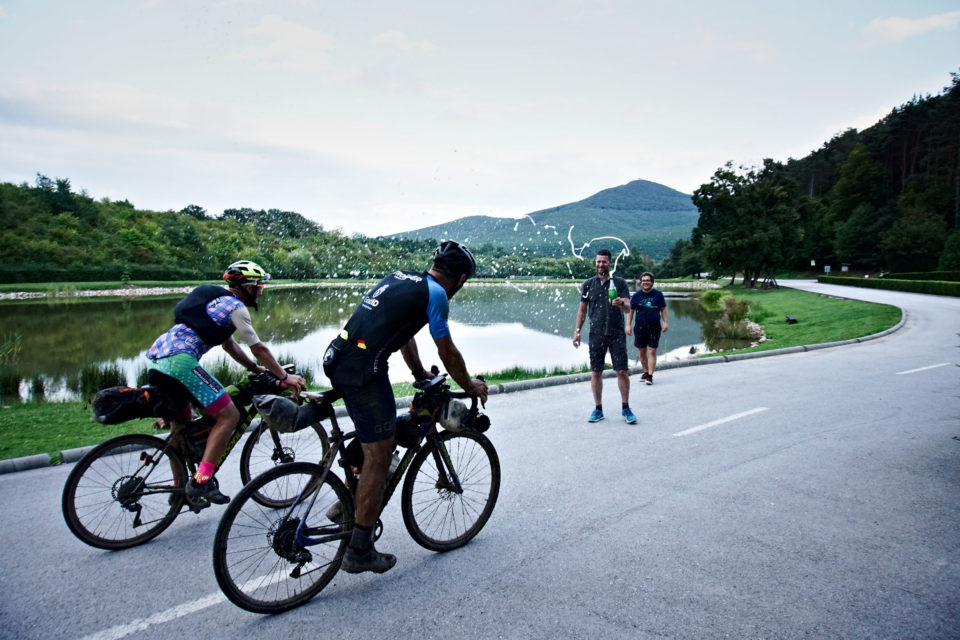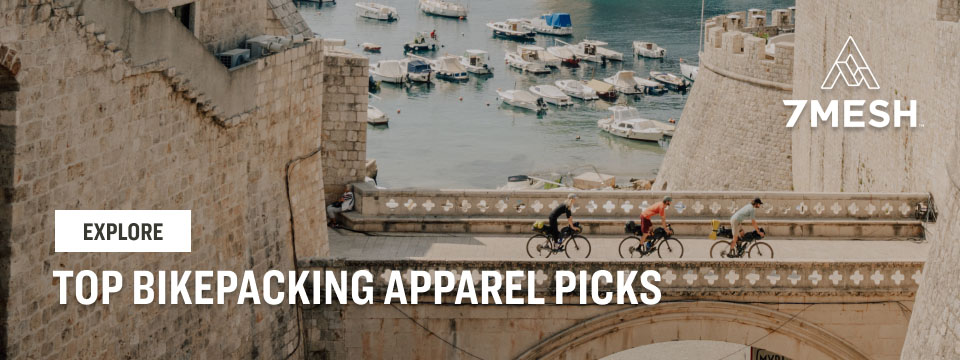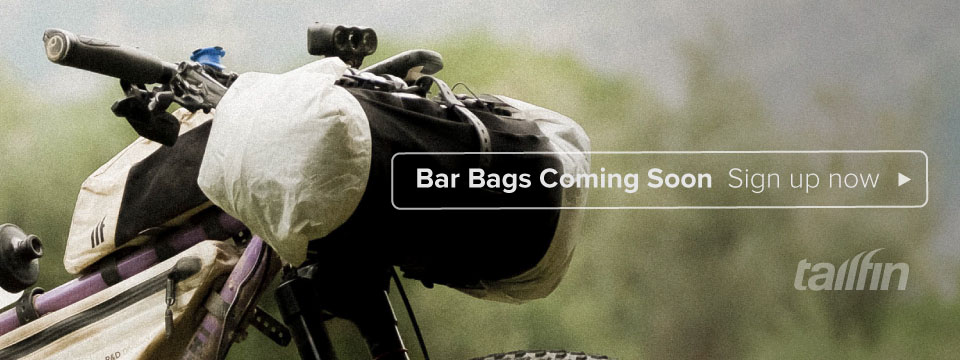The first unsupported bikepacking event in Hungary, the 2020 Hungarian Divide, attracted nearly 100 participants for a 600km or 1,200km race across the country. Find a recap from Várnagy Szabolcs with photos from Tivadar Domaniczky and Róbert Apjok here…
Words by Várnagy Szabolcs (@varnagyszabolcs), photos by Róbert Apjok (@roblifecycles) and Tivadar Domaniczky (@tivadardomaniczky)
Ninety-nine riders started, but only 59 finished. This figure alone is a good illustration of the difficult challenges the Hungarian Divide posed to participants. They had to travel 600 or 1200 kilometers, from one side of the country to the other, and through the roughest terrain, to earn the finisher’s badge. But as it turns out, the cyclists were just as good in comradeship as in suffering, making the experience extremely hard but really friendly at the same time.
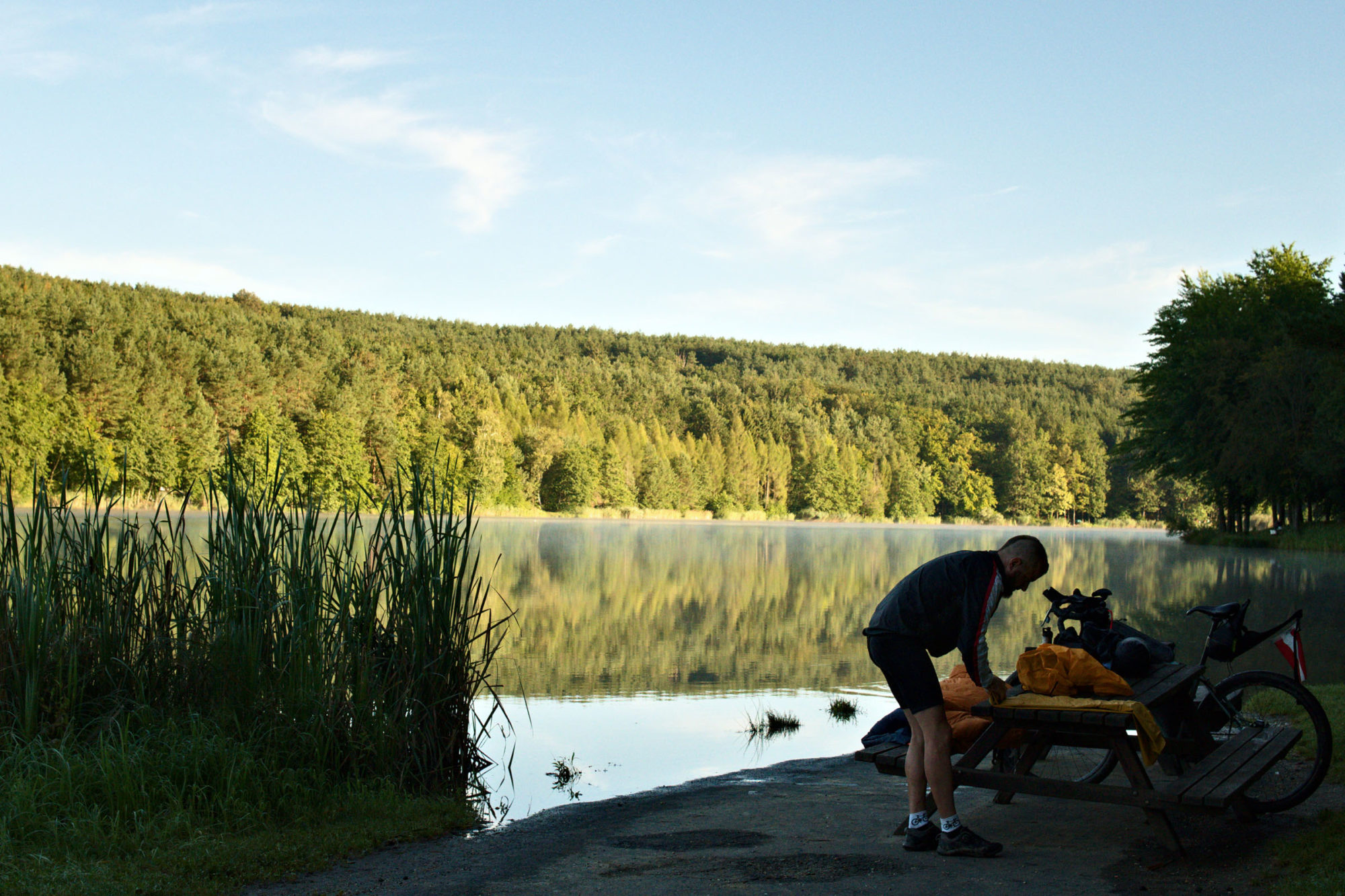
One of a kind in Hungary
Ultra-distance bikepacking events are common nowadays, but not in Hungary. This was the first one of its kind. Last year the organizers held the precursor of this event, 5 Peaks 500, which attracted a surprisingly large number of people: 70, to be exact. The route was only 580km long then, and there was no GPS tracking either. But, building on the positive reception and the ever-growing bikepacking and gravel community, Bikepacking Hungary decided to take things a step further in 2020 with Hungarian Divide.
It can’t be that hard…
For the half distance of the Hungarian Divide, the 70 riders had to get from Szentgotthárd to Budapest, overcoming 600km and 10,000 meters of climbing, which was managed by only 38 entrants successfully. However, those who went for the full distance would not stop until Sátoraljaújhely at the southeastern border of the country. Of the 29 people who set off for the 1,200 km ride, 21 finished, although the highest climbs really tried people out, such as the Kékes tető, which is Hungary’s highest point at 1014 meters and awaited adventurers in the second half of the tour.
The adventure began at Lake Hársas. On August 20, minutes after the start, the bikers found themselves in a muddy, winding, steep, and stony forest. In an instant, it became clear who trained hard enough and chose the right gear and who didn’t. At first, the mud was the biggest challenge, then steep slopes and roads dotted with tiny, sharp stones and gravel made life more exciting. After that, the deep and wet sand was almost a refreshment for everyone.


The entire route is difficult to tackle, as it crosses an entire country. Only a third of the distance was on asphalt, and on the other parts they encountered essentially everything except snow. Unusually for many, however, after a whole day of cycling, even resting was a difficult problem. Booking accommodation in advance was a risky venture, as it was far from certain due to the difficult terrain that anyone could keep a pre-planned schedule. So, there were those who camped in the wild, there were those who phoned hotels while riding, and there were those who, when they arrived in a village in the middle of the night, hoped for the best, so they could bow their heads in comfort for a few hours, and maybe even have a shower.
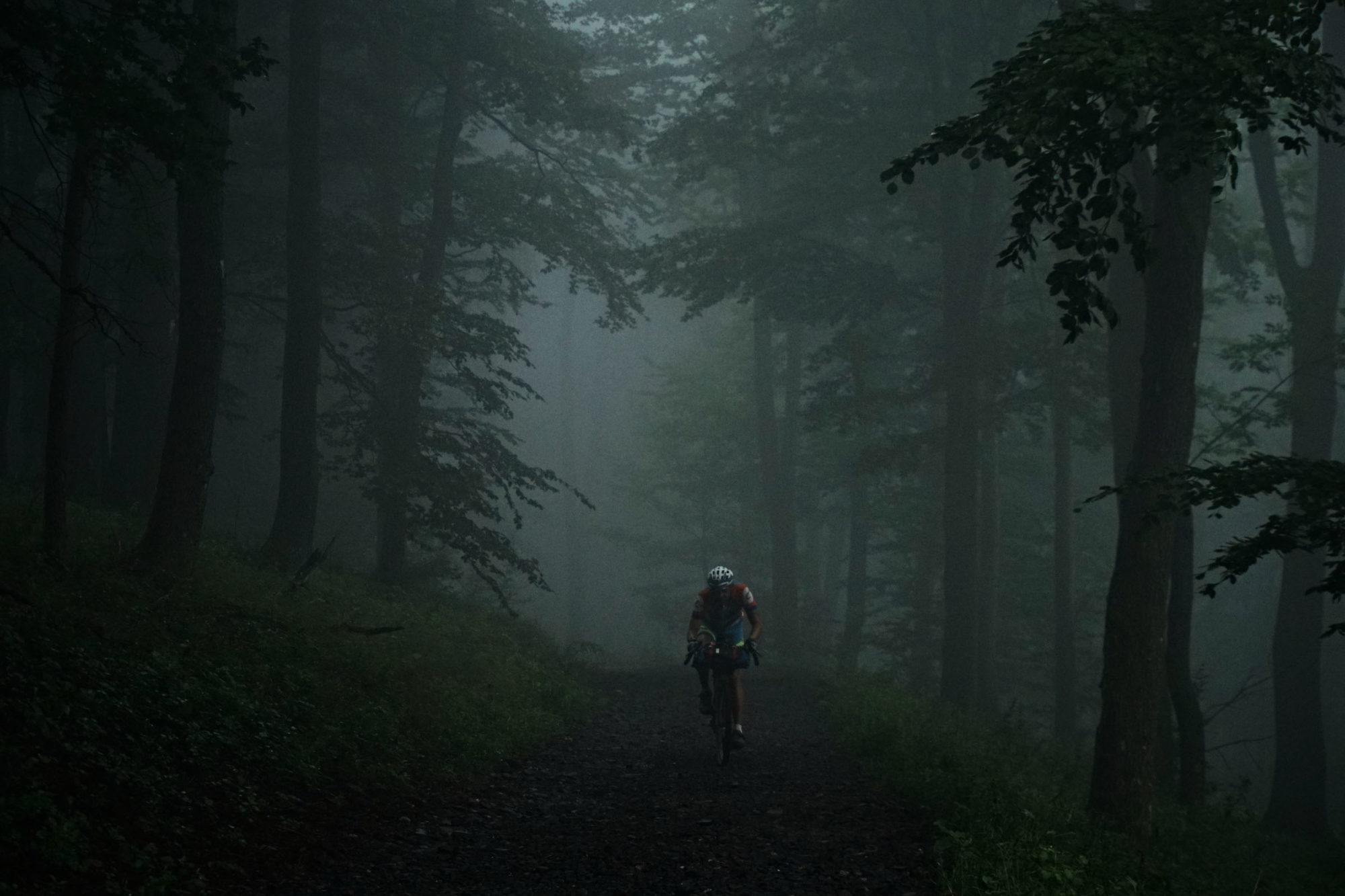
Alone, but still in the community
The atmosphere of Hungarian Divide is completely unique in Hungary, for three reasons. Firstly, the difficult circumstances immediately forge close bonds between complete strangers. It’s only natural that they stop to help each other in case of an injury or when someone is having mechanical problems with the bike. Thankfully there were only a few injuries, but this can’t be said about the mechanical failures: punctures, torn chains, broken shifters, and snapped spokes were commonplace at this event. However, participants can only rely on themselves and each other to fix them.
Of course, the “peloton” fell apart and the vast distance meant that the riders often didn’t see anyone for hours. Some rode alone almost all the way and but some stayed in smaller groups, yet all the time the participants formed a community and were able to share their experiences, thanks to a WhatsApp group. The wider audience did not see any of this, as the participants existed in a particular bubble during the event. Their lives have been reduced to providing for their basic needs, pedaling, and chatting on WhatsApp.
However, the broader audience was also able to join in a way. This was the first event in Hungary where the fans, friends, and families of the participants could get acquainted with the concept of “dotwatching” in practice. Each rider had a GPS tracker, which allowed anyone to track live where they were on an online map. As boring as this sounds, it was so exciting during the event. For many, the first thing to look at in the morning was not the coffee machine but the map to find out what happened during the night and who rode the farthest.

Eight hours of sleep is important
The time limit to complete the half distance was six days and those who went for the full distance had 10 days to finish. The riders could venture off from the given route, but they had to return to the same point to continue the journey. But there were few other restrictions, everyone allocated their time the way they liked and rested as much as they wanted. As a result, participants went for radically different strategies.
Levente Bagoly completed the 1240 km distance and the 20,000 meters of ascent in 4 days and 23 hours, with about a total eight hours of sleep. Levente basically did not stop, which proved to be a foolproof tactic. On the podium, everyone followed this style of riding. Zoltán Zóka-Újhelyi arrived second and he slept 14 hours total, while István Szűcs was the third and he slept 12 hours. However, Balázs Nedjalkov and Zoltán Koleszár followed a different tactic. They slept every night from 11 p.m. to 4 a.m. and were on the road by 5 a.m. Despite getting “plenty” of sleep, they reached the finish line only eight hours after Levente.
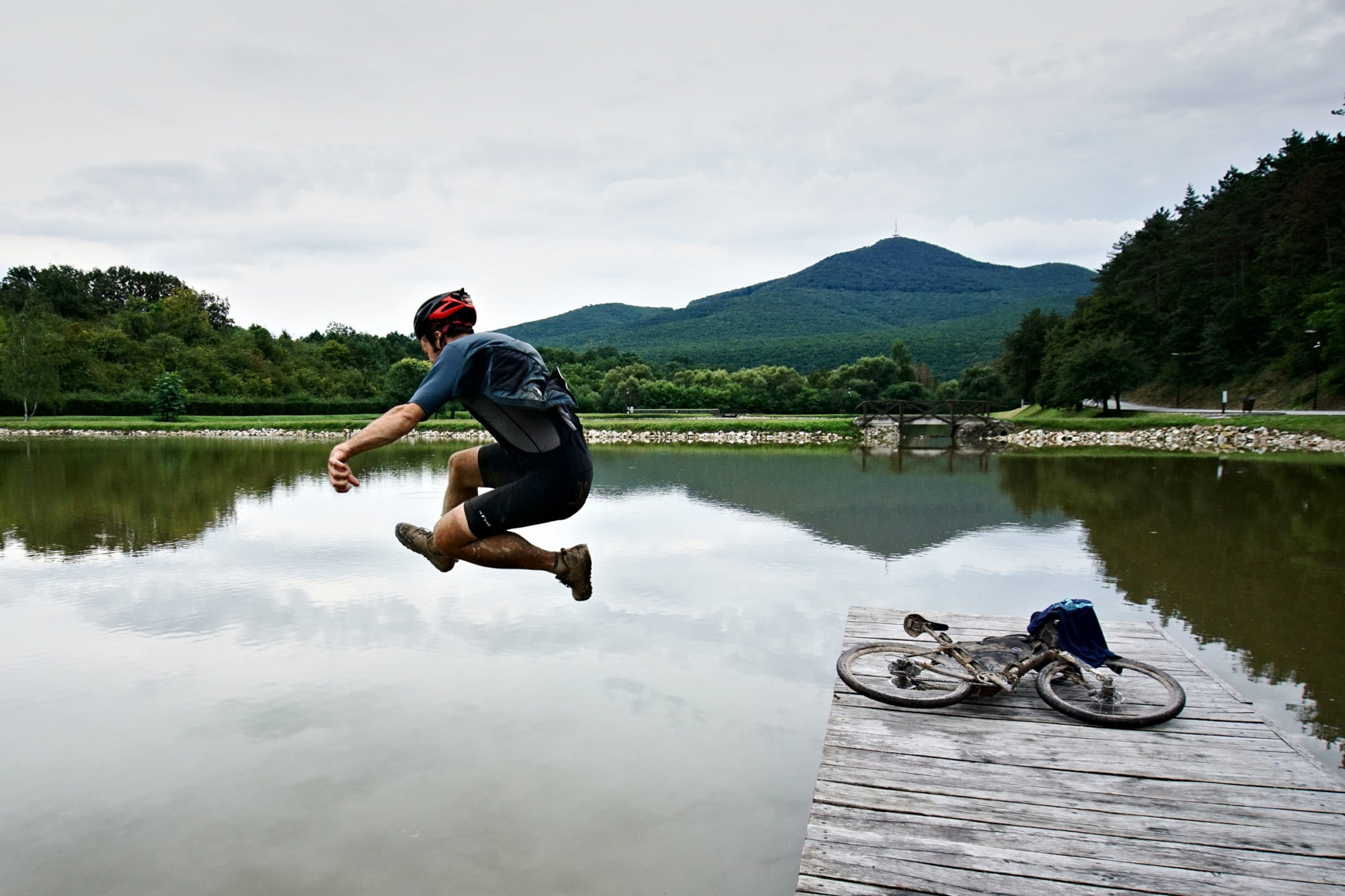
It’s easy to see that sleeping 1-2 hours a day for five days and riding all the time on difficult terrain is a daunting task. Those who are capable of such performance train a lot for this purpose. It should not be forgotten, however, that most of the entrants have not prepared for the tour in this way. They train less, are less experienced riders, and have no professional equipment, hence their goal was merely to finish within the time limit. Perhaps Hungarian Divide was an even greater challenge for them to complete, as their bodies were not accustomed to this stress, they had to carry more weight, they got more punctures and they could not rely on the experience they had just now obtained on Hungarian Divide. Kudos to everyone who managed to push through until the end!
Whether you are a beginner or a professional, the Hungarian Divide is a huge challenge and an even more powerful adventure, at the end of which you will be terribly proud to have reached the finish line.
The good folks at Bikepacking Hungary have let us know that there will be two events in 2021. Keep an eye on the events calendar for updates.
Please keep the conversation civil, constructive, and inclusive, or your comment will be removed.






